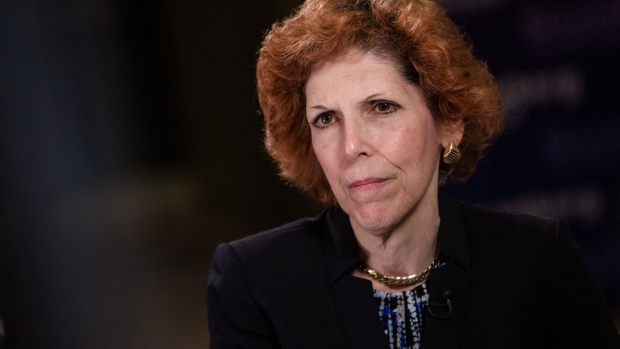Jun 17, 2024
Mester Urges Fed to Explain Its Decisions, Policies More Clearly
, Bloomberg News

(Bloomberg) -- The Federal Reserve has transformed how it communicates with the public in recent decades, and Loretta Mester has had a front-row seat. She’s attended more than 200 of the US central bank’s policy meetings, first as a staffer on the sidelines and, since 2014, as a policymaker at the table.
Now, on the eve of her retirement, she says the Fed can do better still.
The outgoing Cleveland Fed chief, who is set to step down at the end of the month after four decades at the central bank, told Bloomberg News that officials can help the public better understand their approach to policymaking by speaking more about what they would do in the event their forecasts don’t pan out.
“I have always been an advocate of trying to explain the rationale for our policy decisions, meaning, ‘OK, here’s how we’re reading the current data, here’s where we think the economy’s going,” Mester said in a June 14 interview. “However, there are risks around that, and there may be other scenarios about where the economy is going and that means for policy X, Y, Z.”
Helping the public understand how officials would respond to different economic outcomes is pivotal to managing expectations and minimizing volatility during times of uncertainty, Mester said. It could be especially important now as they prepare to begin lowering their benchmark rate after raising it to a two-decade high last year.
The outgoing Cleveland Fed chief has outlined a communications strategy along these lines in recent years, including in a speech last month in which she recommended issuing longer statements after policy meetings. The document has shrunk by about 60% in the last decade, Mester noted.
While it’s good to be concise, the more limited word count makes considering any changes especially challenging for policymakers because every word is scrutinized by markets, she said.
She’s also proposed revising the format of the Fed’s closely-watched quarterly projections to link the rate outlook of individual policymakers to their respective forecasts for inflation, growth and unemployment.
Mester, who took the top job in Cleveland after three decades at the Philadelphia Fed, developed a reputation over the years as one of the central bank’s more outspoken hawkish officials.
Soon after becoming a policymaker in 2014, Mester began to call on the Fed to lift interest rates out of concern that the near-zero borrowing costs still in place since the 2008 financial crisis could encourage excessive risk-taking, creating financial stability risks.
Dissenting Votes
Those concerns, shaped in part by her years of researching finance and banking, led her to vote against her peers at key moments — such as the dissents she made in favor of rate increases in September and November of 2016, meetings when the Fed left rates unchanged.
Mester also cast a lone dissent at the start of the pandemic, when policymakers took the emergency action in March 2020 to reduce borrowing costs to rock-bottom levels as businesses around the world shuttered and people hunkered down at home.
In a statement explaining her reasoning, Mester said she was concerned the Fed’s rate move would not have as much impact at a time when markets were unstable. She supported the central bank’s efforts to flood the financial system with liquidity to support market functioning.
While the central bank also didn’t raise rates as quickly coming out of the pandemic as she would have liked, its message that higher rates were coming led to tighter financial conditions in advance of the first increase in March 2022, Mester said.
“So, in that sense, I think you could say that we acted earlier,” Mester said. In financial markets, “We actually started to get rates firming in December.”
Mester became the third woman to run the Cleveland Fed — following predecessor Sandra Pianalto, who was president from 2003 to 2014, and Karen Horn, who served from 1982 to 1987. Goldman Sachs Group Inc. veteran Beth Hammack will become the fourth woman to head the regional Fed bank when she starts in August.
Mester said the four Fed chairs she’s worked with since she joined the central bank all had different communication styles, but their common thread is that they all encouraged fellow peers to share their views.
“What’s great about the institution is, not only is it that they tolerate different views, it’s actually expected that you come in with your own views about things,” she said.
©2024 Bloomberg L.P.